CITRUS IN THE SOUTH
TEXT: JENNY GUSTAFSSON
PHOTOS: JENNY GUSTAFSSON
RESEARCH: ANGELA SAADE, RANA HASSAN, YARA WARD
EDITS: NISREEN KAJ
Picking lemons and oranges with Karim El Hassan
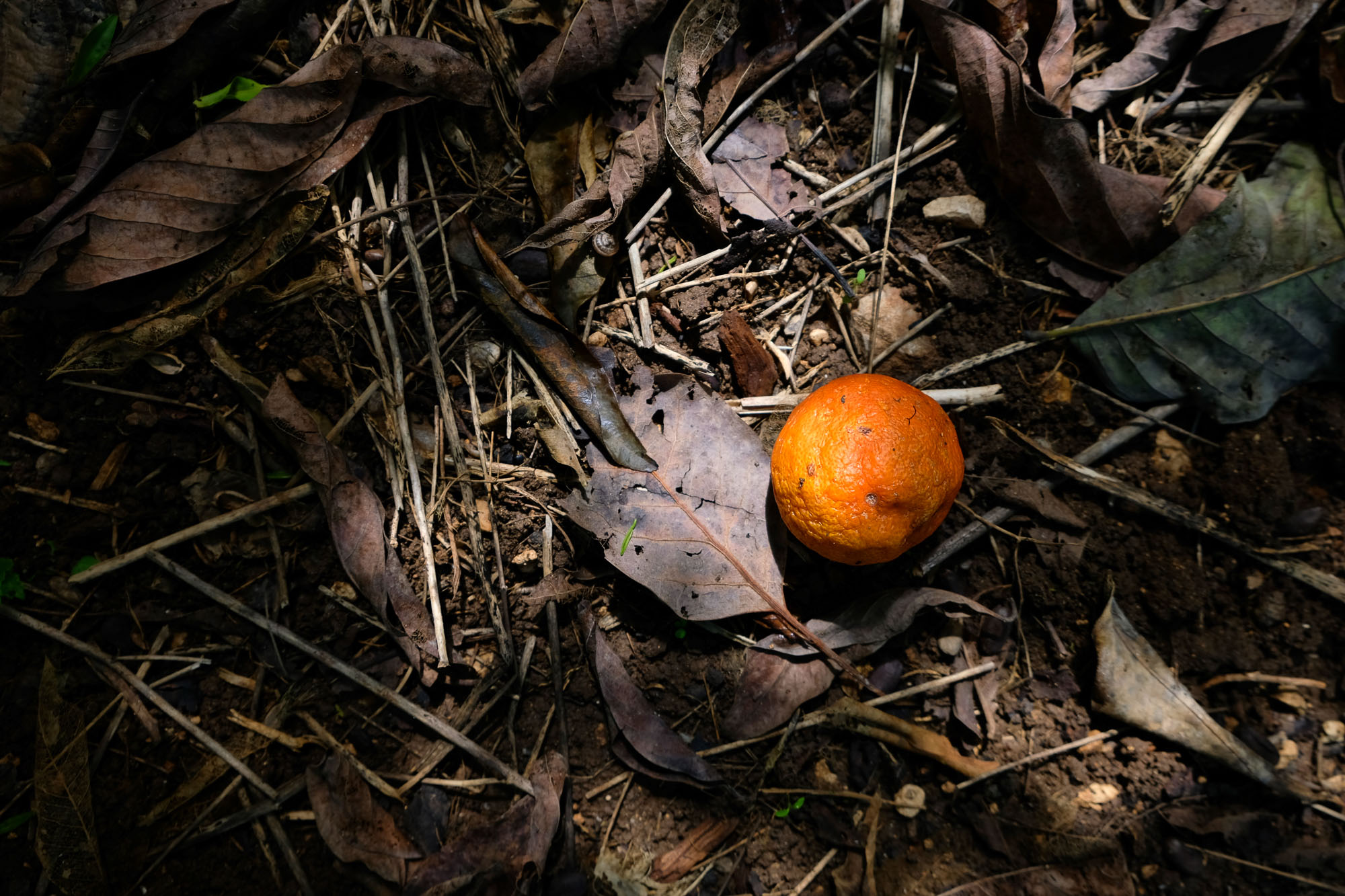
A mandarin, one of hundreds of citrus varieties grown across the world, has fallen to the ground in Karim El Hassan's garden
When driving south from Saida on Lebanon’s southern coast, almost every piece of unbuilt land is covered with plantations. At first, all you can see is greenery, but the moment you get closer, fruits the color of the sun appear among the leaves.
In the past, these fruits would all be citrus – oranges, lemons, and heavy pomelos have grown on Lebanon’s coast for generations. Now, many have been replaced by bananas, which ensure a faster profit. But there are still some citrus orchards in the area.
One of them belongs to Karim El Hassan, a man in his 30s who grew up in Abu Dhabi but spent his summers in Lebanon. His land sits right in between Saida and Sour, a few minutes away from the road in the small town of Kadmous. Wearing a green hoodie, Karim walks around among the trees.
“My grandfather planted this land. He used to live from this grove at some point, and he sold both oranges and avocados,” he says.

Decades later, it is now Karim who takes care of the land, with the help of Hassan, a man who has been with the family for 20 years. When starting to manage the orchard, Karim decided to only follow sustainable practices.
“It began during a period of me trying to find solace in nature. I went from one place to another, from one river and one mountain to another. During Covid-19, I took time to learn more about permaculture and began to focus on the land,” he says.
He holds a cup of tea in his hand, made from his own dried herbs and flowers. Following his footsteps are two dogs, Basma and Fungi. At one point, Basma lies down in the sun, surrounded by plants and flowers.
At one end of the garden, a narrow staircase leads up to the family house and a small patio. From there, you can see all the way to the sea.
It was somewhere with similar Mediterranean views that citrus entered world history. The Rutaceae family of sweet and sour fruits originated in Southeast Asia, at the foothills of the Himalayas in today’s India. But it was here, on the Mediterranean, that they were cultivated for the first time.
Archaeological findings show that citrus was planted in ancient Babylonia, in Cyprus, and in the Persian Royal Garden near Jerusalem. Seeds had arrived with merchants, on ancient trading routes originating in Asia. The very first fruits, knobbly citrons (one of the citrus family’s three wild ancestors, along with mandarins and pomelos), were so acidic that they could not be eaten. Still, their early arrival meant the entire taxonomic family was named after them – despite being its perhaps least prominent member.
In the garden, Karim goes to get a woven basket and starts filling it with oranges of different sizes.
Karim in his citrus grove near the coast in southern Lebanon
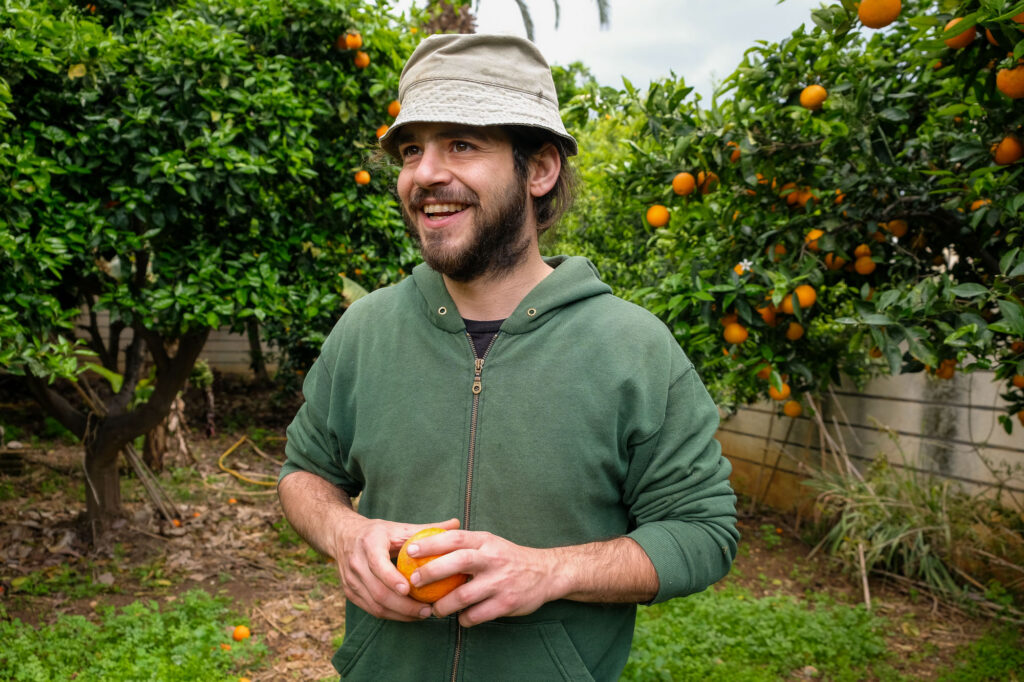
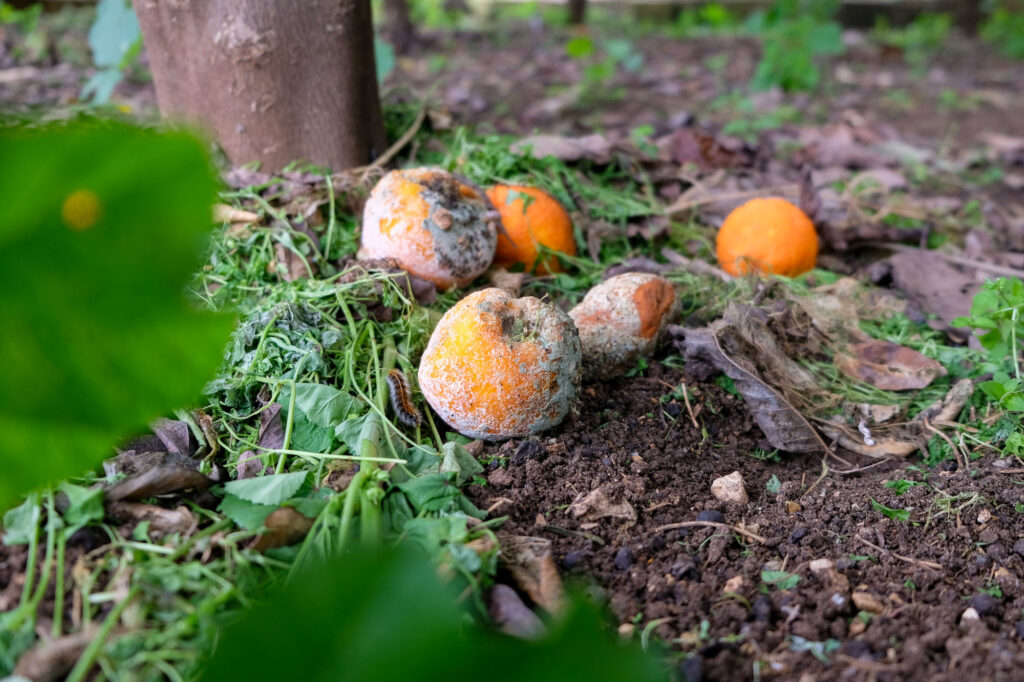

The orange is the world's most popular citrus fruit. It is also the main member of the family grown in Lebanon
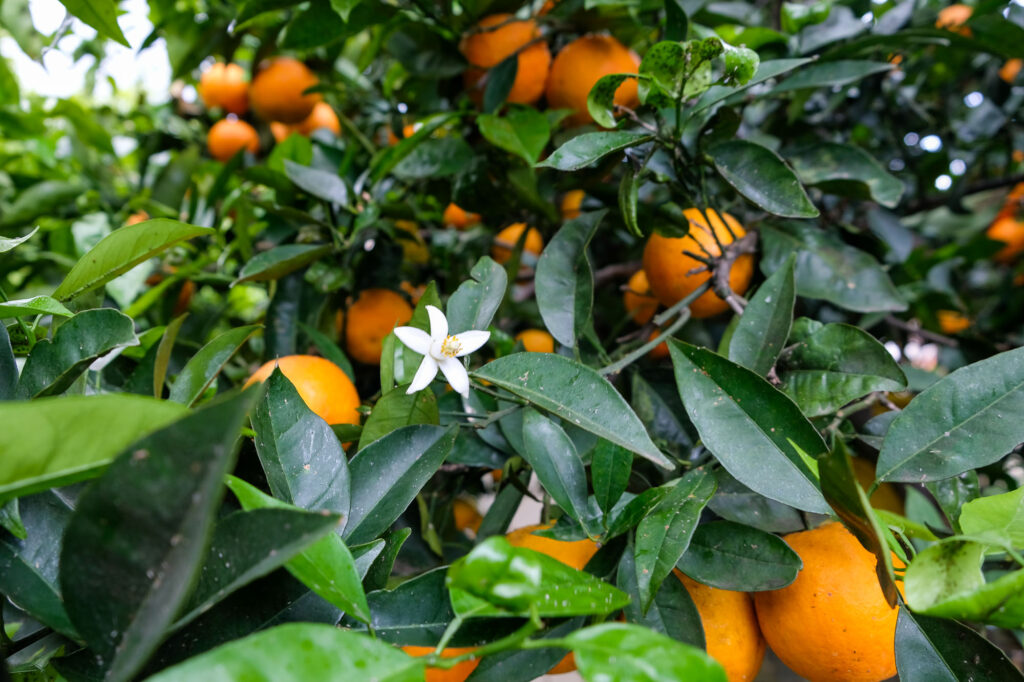
“All fruits differ from one another. Citrus trees have a long life and bear fruit for a long period. I have different varieties here and they all overlap. When the season for clementines and mandarins is over, Valencia oranges start coming,” he says.
That is exactly what his grandfather had in mind when planting the first trees. If many varieties grow together in the same grove, there would always be at least one bearing fruit.
“This way, you’re only without oranges for two or three months. If you add pomelos and grapefruits, you have fruit all year long,” Karim says.
Apart from citrus, Karim grows a long list of fruits and vegetables. There are fig trees and avocados, pomegranates, olives, and papaya. There are also cauliflower, cabbage, and many kinds of herbs and leafy greens. This diversity, he says, keeps the soil healthy.
“I have planted a lot of things in between the trees, so watch your step. There’s parsley, arugula, mint, and pineapple sage. And there are thirty types of flowers, they serve both as pollinators and pest control,” he says.
By now, the basket is filled with oranges, so Karim leaves it on the ground to be picked up later. Oranges are by far the most cultivated citrus fruit in the world today (about 70 percent of all output), as well as in Lebanon (amounting to 50 percent of the total harvest). But it was the last to arrive in the region – and the last to spread across the world.
For hundreds of years, people in the Mediterranean had made due with citrons and lemons. The Chinese and Japanese, on the other hand, had eaten oranges for a long time. The fruit was highly valued in Imperial China, and often gifted to visitors of the court. The first known book entirely devoted to oranges was written by a Chinese author, Han Yen-Chih, in 1178. People in East Asia also ate – and adored – the smaller mandarin, which still is considered auspicious and appears in many festive celebrations.
When oranges finally arrived in the Mediterranean, it was on trade routes established by the Genoese and Portuguese. This explains why the fruit in many languages, including Arabic, is called “Portuguese.” Other citrus names also reveal their history of being traded by Arab and Mediterranean merchants. The word lemon derives from the Arabic and Persian word “laymoun” (which in turn may come from the Sanskrit word “nimbo”); the word orange originates in the South Asian Dravidian root “nurga,” which means fragrant.
The eastern Mediterranean coast, it turned out, was exceptionally good for growing citrus. Groves were established all along the coast, and became an important part of the agricultural economy. Jaffa got worldwide acclaim when the shamouti orange, a spontaneous mutation of local varieties, was shipped across the world in boxes marked “Jaffa.” The industry flourished in the latter half of the 1800s and the early 1900s. Before the Nakba, citrus accounted for 77 percent of Palestinian exports.
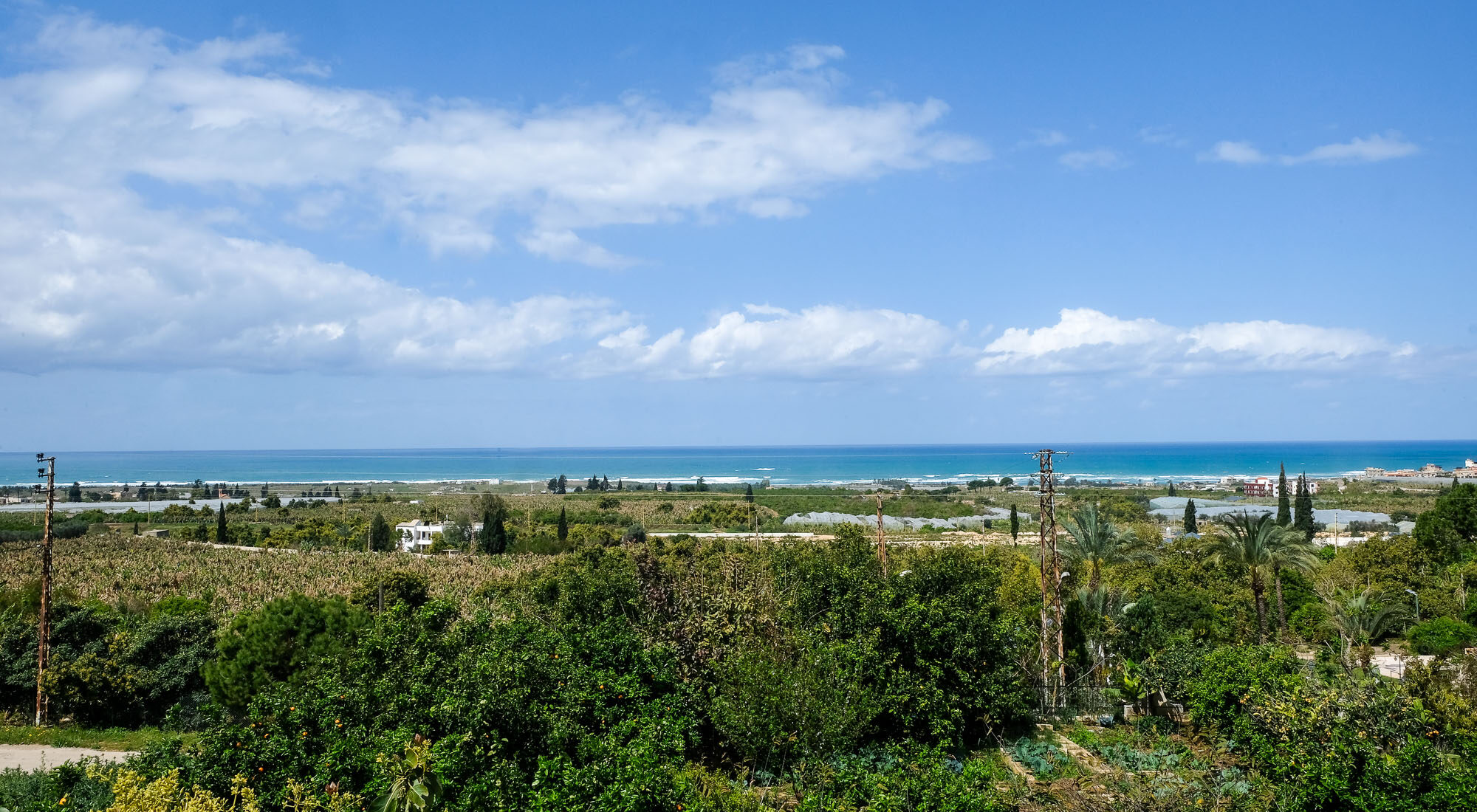
Further north, on the Lebanese side of today’s borders, citrus was planted in groves, often alongside loquats (akadynia), bananas, and mulberry. A report from 1951 describes Lebanon’s citrus production as a “jardinage” or “garden culture” industry, with mainly small family growers cultivating two to 10 acres each.
Northern Lebanon was the center of the industry at the time; Tripoli was known as “Al-Fayha,” from the word for scent, because of its orchards. At the time, the report says, the country’s total citrus production reached two and a half million boxes “on a good year.”
In the 1950s and 1960s, as Lebanon began to produce less cereal (at the demand of urban merchants, who in turn were directed by Western economic and political interests), the citrus industry grew in scope and became more oriented towards export. This also started Lebanon’s dependency on imported grains, which continues until today.
The years 1955 to 1970 saw a 250 percent increase in citrus production (and a cut in half of cereal output), and bigger farms started to take the place of family orchards. The cultivation moved south, concentrating on the coast between Beirut and Sour, where wealthy city people bought land and established plantations. As few as 20 traders, connected with bankers and merchants, came to control some 80 percent of the citrus production.
At this time, the Lebanese agricultural industry also benefited from the work of displaced Palestinians, who played an important role in the growth of the citrus industry.
“When people came to Lebanon because of the Nakba in 1948, they brought seedlings with them so we could grow new varieties here,” Mohammad Firas Hassan, a man in his 70s who worked with citrus in southern Lebanon, says.
He sits on the balcony of his home in Sour, with views stretching all the way to the hilly outskirts of the city. In front of him on the table is tea and a pack of cigarettes. One by one, he starts recounting the different varieties of oranges grown in Lebanon.
“The family is big and diverse. First, you have the early varieties. Abu Surra, clementine, Effendi, Yafawi or Jaffa oranges from Palestine, and Ma Warde, which is a kind of blood orange. Then there is the Arkinik, the Wikel, and the Valencia oranges.”
The last variety, named after the Spanish coastal city, came to Lebanon in the 1940s, and appealed to people so much that it supplanted local baladi and Maghrebi oranges. It remains popular and is great for making juice. Abu Surra, also known as navel orange, is sweet with a thick peel; Effendi, which is a mandarin and not an orange, reputedly arrived in Lebanon with an Egyptian notable (effendi in Turkish) called Yousef Effendi. There’s also an orange called Khitmali, from the word for seal, because it has what looks like a stamp at the bottom.
Lemons, Mohammad continues, come in different varieties as well.
“We have four kinds here. One that gives fruit all year around, another that gives fruit half the year, and yet others that have late flowering seasons.”

Karim's dog, Basma, resting in the sun

In his garden, Karim grows lemons, grapefruits, and pale-yellow pomelos. Many citrus fruits can be harvested gradually, he says, and may stay on the tree for as long as three months for some varieties.
He points to the leaves of one of the trees. They are infested with pests, which he treats by spraying them with his own natural pesticide made from aloe vera, lemongrass, oregano, garlic, and chili pepper mixed with vinegar, bicarbonate, and olive oil.
Most citrus growers in Lebanon use plenty of chemicals on their trees, something that is partly linked to them practicing monoculture, which empties the soil of nutrition and exhausts its capacity.
Mohammad in Sour says that producers today spray their trees in ways that are damaging for both the land and the fruit.
“When we try to export our fruits and vegetables abroad, they send them back because the percentage of insecticides is too high. It is very hard to find citruses and bananas that are not sprayed.”
Some substances are better than others though, he says. Many Japanese-made pesticides are highly effective and less damaging. But with the economic crisis, most people cannot afford them.
In the past, growers did not spray their trees at all, and for fertilizers, they relied on chicken, goat, or cow manure. There was little need to use strong products anyway. Pests have grown much more common today, a result of both cross-continent trade and the loss of biodiversity that used to keep diseases at bay.
The report from 1951 describes how citrus was harvested at the time. It was entirely manual: the fruit was picked by hand and placed in baskets carried using sturdy shoulder straps. Porters would come to collect the baskets, load them on donkeys, and take them to the packing house. Once there, workers would remove stains or scales using strips of rubber from car tires, then sort the fruit according to size and grade. Fruit for export was individually wrapped; locally sold citruses were packed and covered with a banana leaf.
1950-51 was a particularly good year, the report says. Lebanon had to consider alternative solutions in case Syria, the main importer, would not buy the fruit, as the country was “not always open for the import of Lebanese citrus.” The proposed solutions were a one million LBP subsidy to aid the industry, or the erection of a juice plant to make use of the surplus. Sweden was also expected to import citrus as payment for “automatic Swedish telephones” installed in Lebanon.
Today, around 250,000 tons of citrus are grown in Lebanon each year. The Mediterranean as a whole produces some 20 million tons, or 20 percent of the world’s total citrus output. Oranges, while still the most sought-after member of the family, are slowly giving way to seedless and easy-to-peel mandarins, clementines, and satsumas, as they get more and more popular.
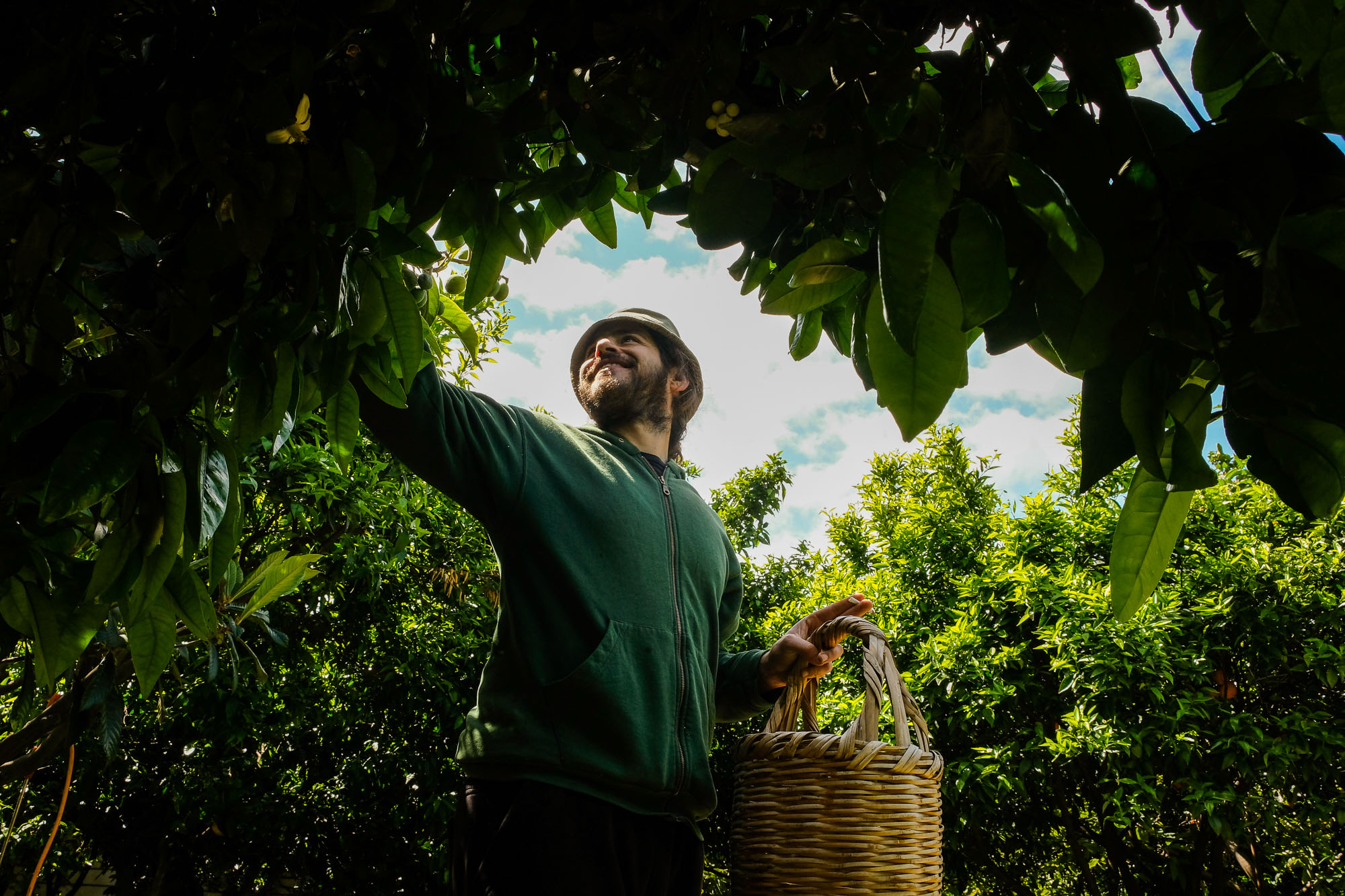
Citrus fruits can be harvested almost throughout the year, depending on variety
Throughout history, citrus has always been a symbol of wealth and abundance. Affluent members of the Roman Empire planted citrus in their Mediterranean gardens, in particular around Vesuvius and Rome. Food from the Abbasid Empire, which was influenced by Persian and Byzantine cooking, often featured citrus. The famed sikbaj stew, for example, was sometimes cooked with citrus leaves. Fruits also appear on both Jewish and Christian mosaics found in Syria, Palestine, and Jordan. The citron (remember the earliest, very bitter arrival?) is still used in the Jewish harvest festival Sukkot. Almost all citrons grown today are sold for that purpose.
A peculiar case is Dutch still-life art, which persistently features lemons. When counted, it was found that 51 percent of all paintings produced in the mid-17th century featured a citrus fruit, typically with a curl of peel. In recent history, citrus’ biggest role was played in the birth of the Sicilian mafia. In the late 19th century, a rapid increase in the demand for citrus (caused by the discovery that vitamin C could cure scurvy) gave early mafiosos an opportunity to target Sicily’s nascent citrus farmers – soon, the mafia gained control of the island’s industry.
In his garden, Karim has almost finished work for the day. He mostly keeps busy in the mornings, when he comes to check in on the trees. He checks if they need water, and if there are any infestations. Sometimes, nothing is needed.
“Farming practices have changed. They used to be labor intensive, now it is more about establishing a system where diverse components in the soil do a lot of the work. Once that is set, your work starts to decrease and your output increases,” he says.
The system that Karim is describing is based on the concept of cover crops, where in permaculture, plants are grown to protect and improve the soil during periods when the land would otherwise be bare.
“This is how I protect my trees from dehydration. Once the soil is exposed to the sun, all things living there would die.”
This year, Karim continues, he is trying new things on his land.
These days, many citrus groves in Lebanon have been replaced with banana plantations. Bananas give more profits and can be harvested shortly after planting

“I don’t want to plant things purposefully, I want them to grow on their own. This tomato for example, I will leave it to grow as it likes. I am experimenting.”
Other growers along the coast do the opposite – they aim to maximize control and output. Many have shifted from citrus to avocados or bananas, which bring a quicker profit. Citrus trees need several years to give fruit, while banana plants yield almost directly. And some landowners, who once bought orchards from people in the south, now sell their land for real estate or construction.
The planning policies in Lebanese towns and cities encourage such transition from agriculture to construction, and fail to protect the few remaining orchards. In Saida, there is the Dam Wel Farz reallotment project announced by MP Bahia Hariri, where orchards in the Wastani area were turned into land open for real estate development. Ismael Sheikh Hassan from the Nohyee el Ard initiative in Saida said in an interview that land with “public and social” value was transformed into capital, which “led to the accumulation of plots in the hands of a few rich people from the city.”

Karim is noW cultivating the land belonging to his grandparents
These developments are often interlinked as well: since banana cultivation has a short lifespan, no more than three years, it provides an interim solution while landowners wait for authorization to turn their agricultural lands into realty development.
When looking through the typewritten report from 1951, this was already a speculation. In the future, the report says, Lebanon’s coastal land “may well be turned over to the production of bananas and more profitable crops.”
True. But there are also growers like Karim who continue tending to their citrus trees.

